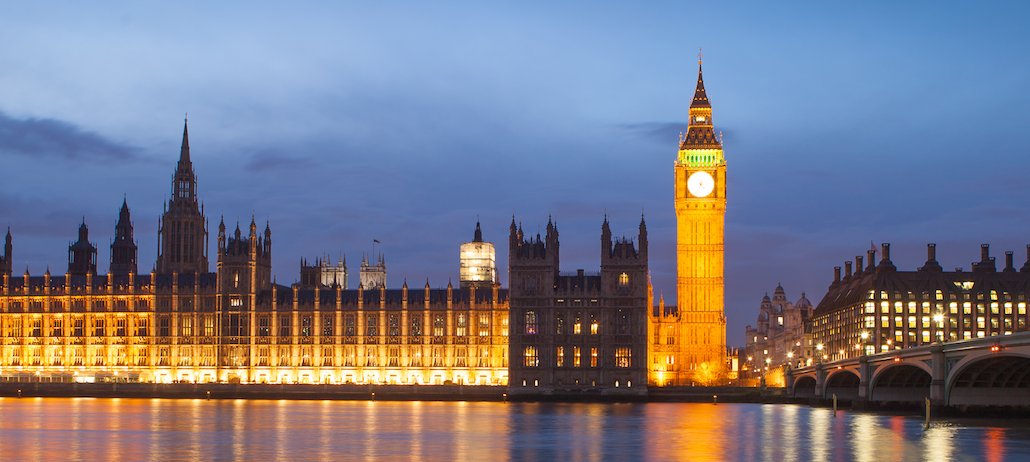
The U.K. fashion industry brings in £26 billion ($39.6 billion) to the U.K. economy, according to data from Oxford Economics. London Fashion Week contributes its fair share to this; during these days of parties and VIP shows, 5,376 bags of Propercorn popcorn are munched, while £100 million ($152 million) of orders are placed online. Aside from the popcorn, we are now consuming 400 percent more LFW content than several years ago, and 78 percent of show attendees plan to tweet during the events. The potential for brand awareness, reaching new audiences and driving sales, is huge — but getting noticed is getting harder.
Digiday looks at the three most notable examples where brands have pushed the boundaries this year.
Burberry and Snapchat
Reinforcing its dominance as one of the most popular brands at LFW, Burberry received more than 12 million interactions on Instagram between September 14-21, and grew its fan base by over 70,000, according to Socialbakers. Burberry was also the most tweeted-about fashion brand: Its show received just over 43,000 interactions.
This year it impressed by showcasing its Spring/Summer 2016 collection on Snapchat. The feed was transmitted live on Sunday as the “finishing touches” were applied in Burberry’s design studio ahead of Monday’s runway performance.
“The approach [for brands] has really changed so quickly,” says Renee Mellow, head of paid social at MediaCom. “The content has to be immersive and everything is so customized for the social networks.” She points out how Snapchat’s Live Stories were posted with a custom Burberry sticker/decal overlay.
Burberry, a premium brand, makes its strategy clear when choosing millennial-favorite Snapchat: make life-long advocates of those who will be buying your products in 10 years’ time.
Hunter and Periscope
In London, Hunter, the U.K. heritage boots brand, was the only one to use live-streaming app Periscope. (On the New York side, 97 designers chose to showcase their wares through the platform.) This side of the Atlantic, many of the events and shows were live-streamed around London venues on digital screens or on websites, so brands wanting to get noticed needed to rely on more than their runway.
“Each season we evolve our live stream experience”, Hunter’s creative director, Alasdhair Willis, tells Digiday; the brand has previously used Instagram video and video-sharing platform Grabyo as social media tools for innovation. “Democratizing the show moment has been key in communicating our brand message to both an already-engaged and a new Hunter audience. It’s an incredible global platform.”

In this case the new audiences were music-lovers. Hunter took the opportunity to show-case three emerging bands in the hour ahead of its show on Saturday. Each act was filmed performing for 15 minutes in Hunter branded 4x4s as they made their way to the fashion show, live-streamed with #BeAHeadliner.
Willis explains this underlines “Hunter’s long-standing connection with festivals,” as the label’s Wellingtons are often seen, weather permitting, at events like Glastonbury Festival in the U.K.
The effort paid off with Hunters Original coming in as fourth most tweeted about show, fifth most tweeted about brand, and received over 40,000 Instagram interactions.
Henry Holland and wearable payments
Beyond brand building, designer Henry Holland’s House of Holland show marked a LFW first by combining frictionless payments with wearable technology. Front row VIPs were sent custom-designed NFC-enabled (near-field communication) rings ahead of the show. As the collection was being modeled, people in the front-row could make a ‘purchase’ by holding their ring close to a tag on the item. The ring transmitted signals to a pre-paid card that was loaded with the buyer’s money and kept with them, so that if the ring was lost no money would be. Transactions were instantly made and relayed backstage where the garments were bagged up and people left the show with their purchase.

Visa Europe Collab, Visa’s innovation lab, worked with Henry Hollander on the project. Jon Downing, innovation consultant at the lab, explains they worked on the proof-of-concept idea for 100 days with the designer and tech partners. “We were asked how could we allow people to make a payment directly on the catwalk, and to be able to take that accessory away at the end of the event? That was something that we has never been done before.”
“We demonstrated a vision for the future. Our goal was to make that payment experience fun, memorable and magical, and take the tech out of the equation,” he says.
Receiving more than 30,000 Instagram interactions, House of Holland wasn’t the most talked about event, but it certainly was the most commercially viable.
More in Marketing

Ad Tech Briefing: Start-ups are now table stakes for the future of ad tech
Scaled ad tech companies need to maintain relationships with startups, when the sector is experiencing ongoing disruption due to AI.

Inside Kristi Argyilan’s RMN playbook: Lessons from the ‘godmother’ of retail media
Uber’s global head of advertising Kristi Argyilan says the future of retail media hinges on real-time relevance, brand differentiation, and breaking free from a one-size-fits-all playbook.

Digiday+ Research: More than half of marketers invest in TV and streaming, with an eye on impressions and branding
The majority of marketers are directing ad spend toward TV, with a focus on ads that drive impressions and branding.





